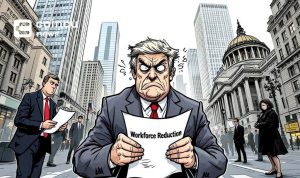Key Points:
- SEC leverages recent Terra ruling to strengthen its case against Binance entities.
- SEC files summary judgment, citing parallels in arguments, urging court to consider Terra judgment’s impact.
- Terra ruling on securities classification resonates with Binance’s stablecoin, staking, BNB Vault, and earn program.
U.S. Securities and Exchange Commission (SEC) and Binance lawsuits, along with former CEO Changpeng ‘CZ’ Zhao, a recent development see the SEC filing a summary judgment in SEC v. Terraform Labs as supplemental authority.

This move aims to strengthen the SEC’s case against the defendants by drawing parallels between the arguments in the Terra case lawsuit and those in the case against Binance entities.
The SEC, in its notice of supplemental authority dated January 3, requests the court to consider the ruling in SEC v. Terra case as relevant to the motion to dismiss filed by defendants BAM Trading Inc. and BAM Management US Holdings Inc. The Terra ruling, according to the SEC, is crucial in addressing the denial of motions to dismiss the lawsuit.
Binance Faces Impact of Terra Lawsuit Ruling

In the Terra case, the court tackled the definition of an “investment contract,” rejecting the defendants’ attempts to challenge established legal principles. The court applied the ‘Howey Test’ to classify UST, LUNA, wLUNA, and MIR as investment contracts, deeming them securities. The SEC argues that this ruling is pertinent to Binance’s stablecoin BUSD, staking service, BNB Vault, and simple earn program.
Moreover, the court granted summary judgment to the SEC on the claim that defendants violated Section 5 of the Securities Act of 1933, emphasizing that they are not entitled to exemption under Regulation S for selling securities to U.S. investors.
| DISCLAIMER: The information on this website is provided as general market commentary and does not constitute investment advice. We encourage you to do your own research before investing. |






















